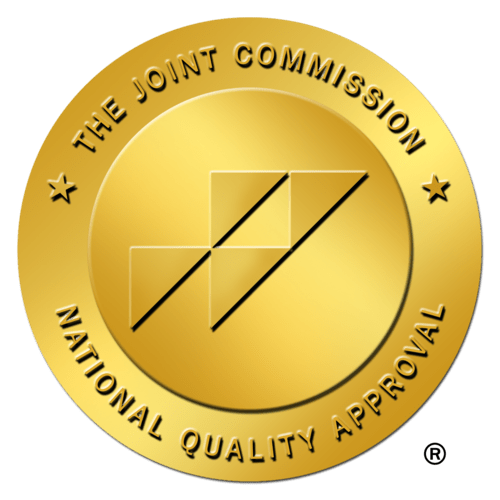
Chief Nursing Officers (CNOs) are responsible for overseeing nursing and patient care within healthcare organizations. The job is a tall order and comes with a wide range of responsibilities and complex challenges. Some of these most pressing challenges and concerns are shared amongst CNOs across the United States as they feel the squeeze of an evolving healthcare landscape. Let’s explore five of the top concerns that might keep today’s CNOs up at night.
1. Patient safety and quality of care
CNOs are deeply invested in ensuring the safety and well-being of patients. At the end of the day, this is always top of mind. Any potential risks or lapses in quality of care can be a significant concern, as they strive to maintain high standards and positive patient outcomes.
Of course, patient care does not exist in a vacuum. There are a host of factors that contribute to the challenges of maintaining quality care and ensuring positive patient outcomes. Some of these factors bring their own set of concerns, including staffing shortages, compliance, technological integration, and financial pressure. Striking a balance between these factors with patient safety being potentially affected by each is a constant dance.
While much of the workforce can go home at night knowing the decisions they made that day were not life or death, CNOs do not have that luxury. Their leadership decisions can directly affect patient outcomes. Even without the weight of other issues, this is a heavy burden to carry.
2. Staffing and workforce issues
Staffing shortages, a persistent concern, place a considerable burden on CNOs. The demand for skilled nursing professionals often surpasses the available workforce, leading to challenges in filling critical positions. The American Nurses Association underscores the urgency of addressing staffing shortages to safeguard patient safety and enhance the overall quality of care (concern number one).
CNOs are tasked with developing and implementing strategies to attract, retain, and continually train nursing staff. Recruitment initiatives, including targeted outreach and competitive compensation packages, have become essential tools in the CNO's arsenal. Additionally, investing in ongoing training programs ensures that the existing workforce remains skilled and adaptable in the face of evolving healthcare demands.
The pressure to maintain staffing levels intersects with financial considerations. The Bureau of Labor Statistics highlights the economic impact of nurse staffing on healthcare organizations, emphasizing the need for strategic financial planning to address this intricate challenge.
In this delicate dance between staffing needs and resource constraints, CNOs must strike a balance to prevent burnout among existing staff, manage workloads effectively, and uphold the highest standards of patient care. The decisions made by CNOs in this context are not merely administrative; they directly influence patient outcomes, making the challenge of staffing a central concern in the daily responsibilities of these healthcare leaders.
3. Compliance and regulatory changes
The regulatory landscape is ever-evolving, demanding CNOs' vigilance in understanding and interpreting changes in standards. Compliance with regulations is not just a matter of fulfilling legal requirements; it directly correlates with patient safety and the delivery of quality care.
CNOs must implement and oversee comprehensive compliance programs within healthcare organizations. These programs include regular training sessions, updates, and resources to educate staff and address any gaps in adherence to regulatory standards. By fostering a culture of continuous learning, CNOs ensure that their teams are well-equipped to navigate the intricate regulatory landscape effectively.
The consequences of non-compliance can be severe, ranging from financial penalties to potential threats to patient safety. CNOs must, therefore, balance the need for stringent compliance with the practicalities of daily healthcare operations.
4. Technology integration and innovation
CNOs recognize that technology has the power to enhance patient outcomes, streamline workflows, and improve overall efficiency. However, the integration of technology presents its own set of challenges.
One of the primary challenges CNOs face is ensuring that technology aligns seamlessly with the needs of nursing staff and enhances rather than hinders their ability to deliver quality care. This involves investing in user-friendly systems, providing comprehensive training, and fostering a culture that embraces technological advancements.
The rapid pace of technological innovation requires CNOs to stay informed about emerging trends and assess their potential impact on nursing practices. Integrating electronic health records (EHRs), telehealth solutions, and other digital tools demands a strategic vision that CNOs must provide.
Financial considerations often intersect with technology integration. CNOs must navigate budgetary constraints while advocating for investments in technologies that offer long-term benefits. The balancing act between embracing innovation and managing costs is a delicate one that requires strategic planning and collaboration with organizational leadership.
Moreover, CNOs play a critical role in addressing concerns related to data security and privacy. As custodians of patient information, they must ensure that technology solutions comply with regulatory standards and safeguard sensitive data.
5. Financial pressures and resource allocation
One of the primary responsibilities of CNOs is to strike a delicate balance between maintaining optimal patient care standards and managing limited financial resources. Resource allocation involves not only budgetary considerations but also the distribution of human resources, technology, and other essential assets. CNOs must navigate the challenge of optimizing staffing levels, ensuring that nursing teams are adequately supported while adhering to budget constraints.
Financial pressures often intersect with workforce challenges, compliance requirements, and the need for technological innovation. CNOs are tasked with making informed decisions that address these multifaceted challenges. This involves advocating for investments in areas that directly impact patient outcomes while identifying opportunities for cost-effective solutions.
Collaboration with organizational leadership and financial stakeholders is essential for CNOs in advocating for resources that align with the organization's strategic goals. The strategic allocation of resources may involve identifying areas for efficiency improvement, exploring partnerships, and leveraging technology to streamline workflows.
CNOs must possess financial acumen to interpret budgetary data and make decisions that optimize both financial and patient care outcomes. This includes forecasting future needs, identifying areas for cost savings without compromising quality, and advocating for the necessary investments to support nursing teams.
In essence, the financial challenges faced by CNOs are integral to their role as stewards of patient care quality. By strategically navigating financial pressures and resource allocation, CNOs contribute to the sustainability and success of healthcare organizations, ensuring that financial decisions align with the overarching mission of providing exceptional patient care.
How can healthcare facilities support CNOs in these concerns?
1. Investment in staffing solutions
Healthcare facilities should prioritize addressing staffing shortages by looking to the future and investing in a technology-enabled flexible workforce model. With a flexible workforce, healthcare facilities gain the agility to adapt to fluctuating patient volumes, seasonal variations, and unforeseen circumstances.
This model not only helps alleviate the strain on permanent staff but also enhances the overall resilience of the healthcare workforce, ensuring optimal patient care while maintaining cost-effectiveness and operational efficiency. Ensuring adequate staffing levels would enable CNOs to manage workloads effectively, reducing the risk of burnout and ensuring high-quality patient care.
2. Comprehensive compliance programs
Establishing comprehensive compliance programs that keep CNOs informed about changing regulations and standards is crucial. Regular training sessions, updates, and resources can assist CNOs in navigating the complex regulatory landscape, ensuring the facility remains in compliance with healthcare requirements.
3. Technological Integration Support
Healthcare facilities can support CNOs by investing in user-friendly and efficient healthcare technologies. Providing ongoing training and support for staff to adapt to new technologies can enhance workflow efficiency, reduce errors, and contribute to positive patient outcomes.
4. Financial resource allocation
Healthcare facilities should work collaboratively with CNOs to address financial pressures. This may involve strategic resource allocation, budget planning, and exploring cost-effective solutions without compromising patient safety or quality of care.
5. Professional development opportunities
Offering continuous professional development opportunities for CNOs is crucial. This includes leadership training, workshops, and conferences that focus on enhancing their decision-making skills, strategic planning, and ability to navigate complex healthcare challenges.
6. Mental health and wellness support
Recognizing the heavy burden CNOs carry, healthcare facilities should prioritize mental health and wellness programs. Providing resources such as counseling services, stress management programs, and fostering a supportive work culture can help CNOs cope with the challenges they face.
7. Collaborative decision-making culture
Fostering a culture of collaboration and open communication within the healthcare facility is essential. Encouraging input from CNOs and other stakeholders in decision-making processes ensures that various perspectives are considered, leading to more effective solutions.
8. Regular check-ins and feedback
Healthcare facilities should conduct regular check-ins with CNOs to understand their concerns, challenges, and potential areas for improvement. Providing constructive feedback and acknowledging their efforts can contribute to a positive work environment.
Easing the burden on CNOs
In navigating the complex landscape of healthcare leadership, Chief Nursing Officers (CNOs) find themselves at the nexus of patient care excellence and organizational sustainability. The challenges explored in this article—ranging from patient safety concerns to staffing shortages, compliance complexities, technological integration hurdles, and the delicate balance of financial pressures—underscore the multifaceted role CNOs play in ensuring the highest standards of care.
As we delve into strategies for supporting CNOs in these endeavors, it becomes apparent that a collaborative and empathetic approach is paramount. By championing initiatives to support CNOs, healthcare organizations not only alleviate the weight on CNOs' shoulders but also contribute to a resilient healthcare environment where patient-centric care thrives. In the evolving world of healthcare, supporting and uplifting CNOs is not just an organizational imperative but a commitment to the well-being of both healthcare leaders and the communities they serve.





